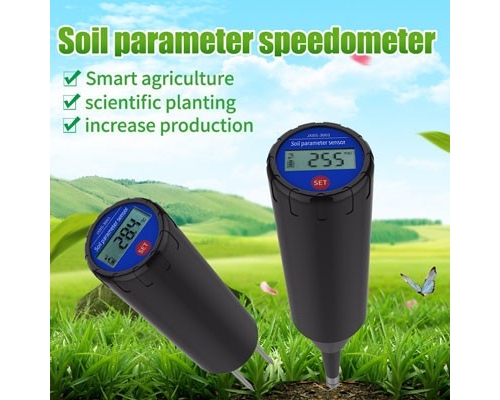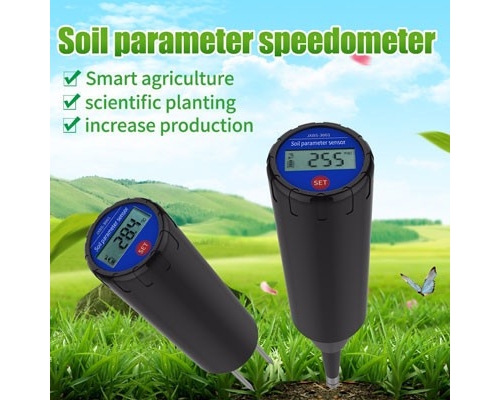In recent years, smart farming technologies have transformed the agricultural industry, optimizing crop production and resource management. Among these technologies, soil sensors have emerged as powerful tools for real-time monitoring of soil conditions. This article explores the significance of soil sensors in smart farming, discusses their benefits, and highlights how farmers can maximize crop productivity by integrating soil sensor technology into their operations. Through continuous monitoring and data-driven decision-making, farmers can enhance resource efficiency, improve crop health, and ultimately achieve higher yields.
Introduction:
Smart farming, also known as precision agriculture, leverages advanced technologies to monitor and manage agricultural practices more efficiently. Soil quality plays a crucial role in crop growth and productivity, making real-time soil monitoring essential for optimizing farming operations. Soil sensors are devices that provide accurate and continuous measurements of various soil parameters, allowing farmers to make informed decisions based on actual field conditions. This article aims to explore the role of soil sensors in smart farming and their potential for maximizing crop productivity.

Benefits of Soil Sensors in Smart Farming:
a. Real-time Monitoring: Soil sensors provide real-time data on crucial soil parameters such as moisture content, temperature, pH levels, and nutrient concentrations. With this information, farmers can promptly identify variations in soil conditions and adjust irrigation, fertilization, and other management practices accordingly.
b. Precision Irrigation: By monitoring soil moisture levels, farmers can optimize irrigation practices and prevent both under- and overwatering. Soil sensors enable the implementation of automated irrigation systems that respond to real-time data, ensuring that crops receive the optimal amount of water. This not only conserves water resources but also enhances plant health and growth.
c. Nutrient Management: Soil sensors allow precise monitoring of nutrient levels in the soil. By understanding nutrient availability, farmers can apply fertilizers more efficiently, avoiding over- or under-application. This not only improves crop yields but also minimizes environmental impacts, such as nutrient runoff and groundwater pollution.
d. Disease and Pest Management: Some soil sensors are capable of detecting indicators of plant diseases and pests. By analyzing soil conditions, farmers can identify potential threats early on and implement timely interventions, reducing the risk of crop losses. Smart farming techniques enabled by soil sensors promote sustainable pest management practices, minimizing the need for chemical pesticides.
e. Soil Health Assessment: Soil sensors provide insights into key indicators of soil health, including organic matter content, compaction, and microbial activity. Regular monitoring of these parameters helps farmers assess soil fertility and make informed decisions regarding soil management practices, such as cover cropping, crop rotation, and organic amendments. Consequently, soil health improves, leading to better crop performance and long-term sustainability.
f. Optimal Crop Selection: Soil sensors enable farmers to evaluate soil suitability for specific crops. By analyzing soil characteristics, such as texture and nutrient availability, farmers can make informed decisions about crop selection, maximizing yield potential and minimizing the risk of crop failure. This ultimately contributes to improved farm profitability.
g. Data Integration and Analysis: Soil sensor data can be integrated with other smart farming technologies, such as weather stations and satellite imagery. By analyzing combined datasets, farmers gain a comprehensive understanding of the interactions between soil, climate, and crop performance. This integration allows for better decision-making and more precise optimization of farming practices.
Integrating Soil Sensors into Farming Practices: a. Sensor Placement: Proper sensor placement is crucial for obtaining accurate and representative soil data. Sensors should be strategically installed at various depths and locations throughout the field, considering factors such as soil variability, topography, and crop types. Farmers should follow manufacturer guidelines and consult experts if needed.
b. Data Interpretation: Effective use of soil sensor data requires proper interpretation. User-friendly software platforms and mobile applications can assist in visualizing and analyzing data, helping farmers identify trends, patterns, and actionable insights. Education and training on data interpretation are essential for farmers to make informed decisions based on sensor data.
c. Calibration and Maintenance: Regular calibration and maintenance of soil sensors ensure data accuracy and reliability. Farmers should follow manufacturer instructions and regularly






